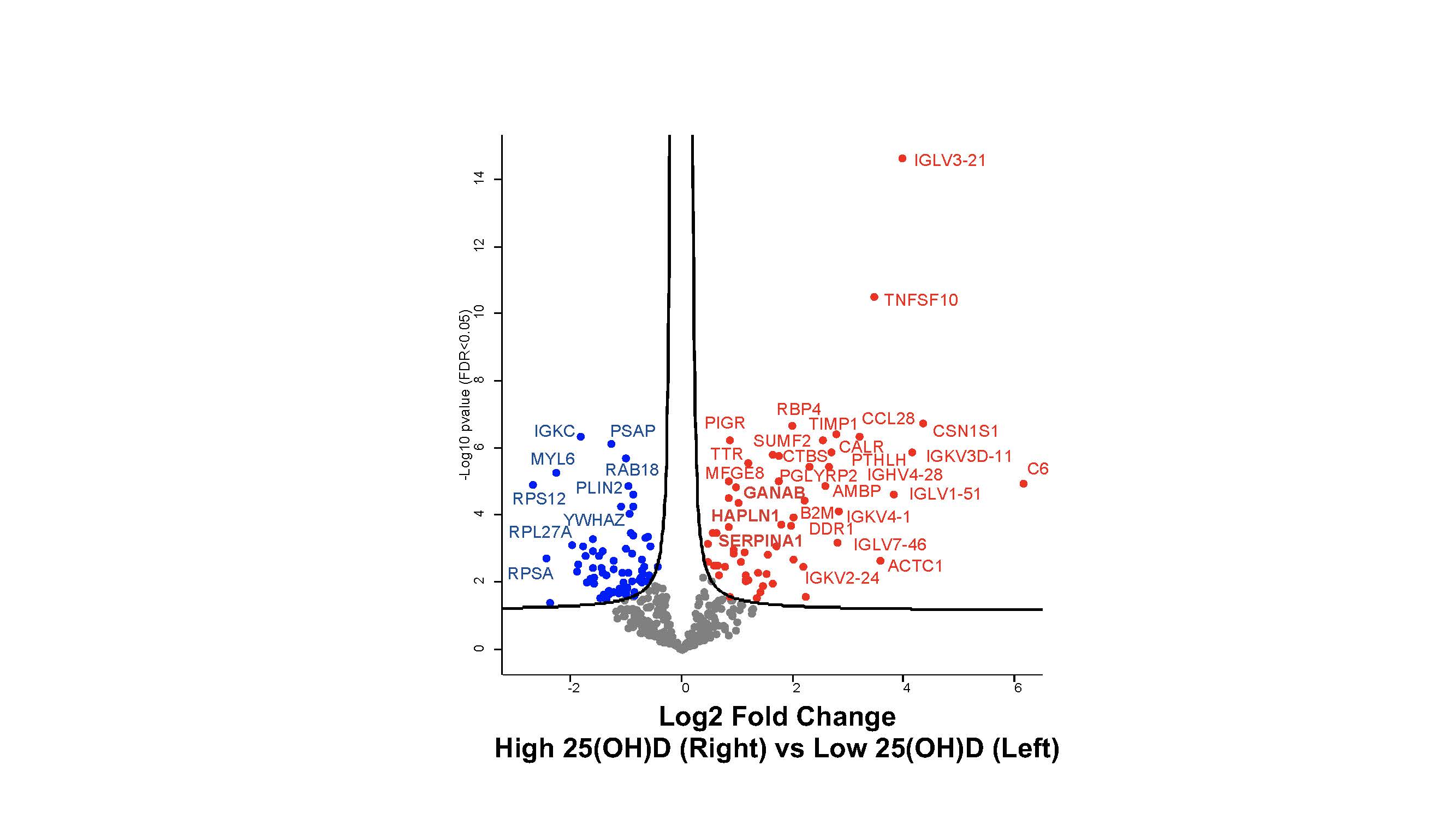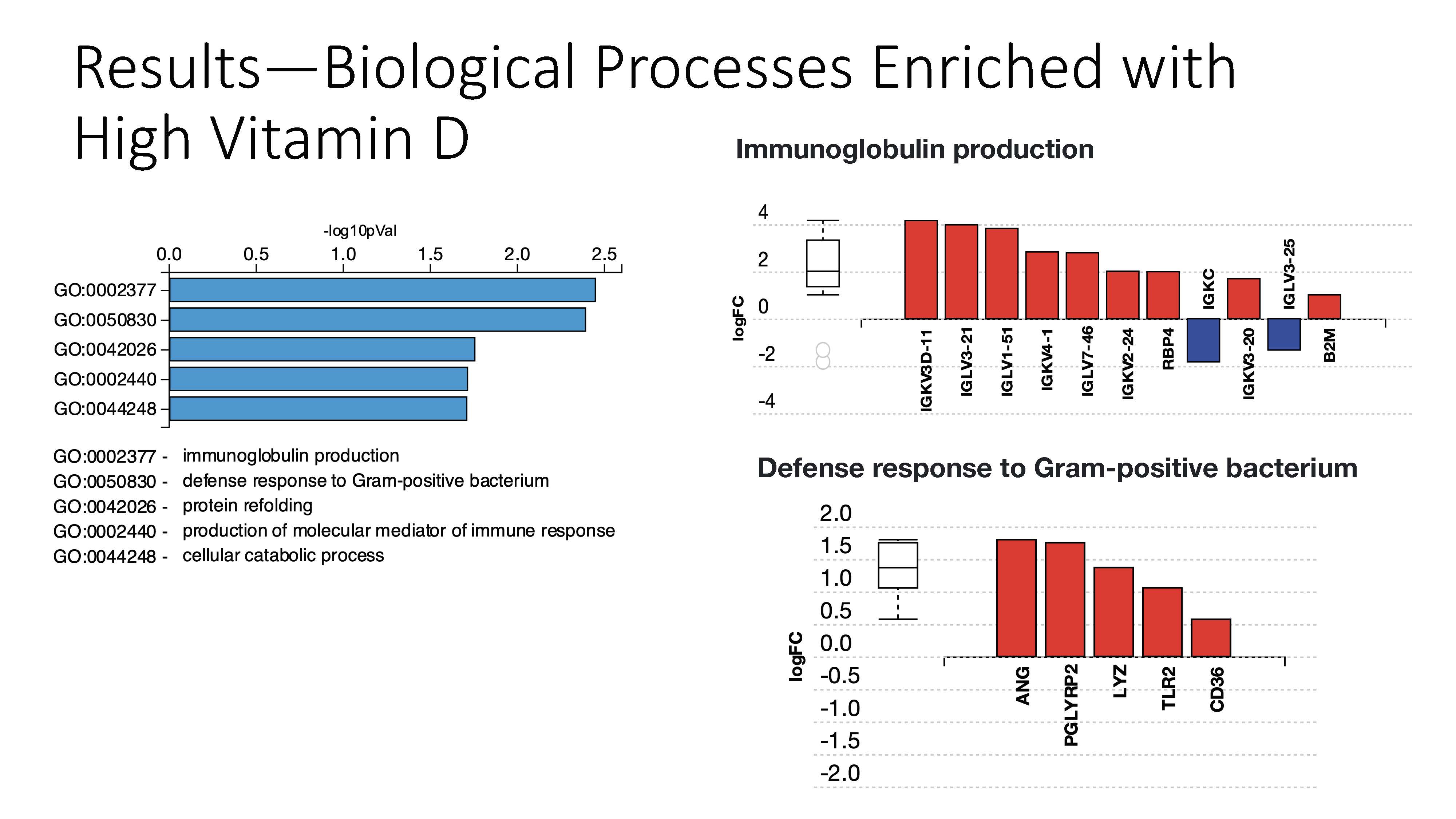Breastfeeding/Human Milk
Breastfeeding/Human Milk 3: Human Milk Bioactives and Composition
23 - The Effect of Maternal Vitamin D Status during Lactation on the Human Milk Proteome
Publication Number: 23.201
- CW
Carol L. Wagner, MD (she/her/hers)
Professor of Pediatrics
Medical University of South Carolina College of Medicine
Charleston, South Carolina, United States
Presenting Author(s)
Background:
Vitamin D (vitD) affects the expression of thousands of genes and their protein products.
Objective: Test the hypothesis that maternal vitD status during lactation is associated with measurable differences in the breastmilk proteome.
Design/Methods: In a double-blind, randomized control immune exploratory study of vitD supplementation during lactation, 40 women were randomized to receive a daily multivitamin containing 400 IU vitD3 and either placebo gummies (0 IU vitD3) or 6000 IU vitD3 given as gummies (Church & Dwight, (Ewing, NJ) starting at 1-month post-partum until 4 months. The study team and participants were blinded to treatment. Monthly blood samples were analyzed for total circulating 25(OH)D concentration. Milk samples were collected from the left breast and milk samples frozen at -20oC until processed. Proteomics profiles of 4 monthly milk samples from 10 mothers were analyzed using LC-MS/MS and label-free quantitative proteomics. LC-MS/MS was performed on an Orbitrap Lumos MS and proteins were identified, quantified, and normalized using MaxQuant software.
Results: 1,250 proteins were identified. Data were filtered to retain proteins quantified in 70% of the samples and protein intensities were compared from patients with high (≥35 ng/mL) or low (≤20) plasma 25(OH)D concentrations using a Student’s t-test with permutation-based correction for multiple hypothesis testing. With a threshold FDR< 0.05, 32 proteins were increased with higher 25(OH)D concentrations, including 3 proteins with VitD Binding Protein (VDBP) transcription factor binding sites. Three proteins SerpinA1, GANAB, HAPLN1 were identified with VDBP transcription factor binding sites based on the Toppgene website (ToppFun). Expression levels of 77 proteins were decreased in high VitD samples (see Figures 1 and 2).
Conclusion(s): Consistent with our hypothesis, these results indicate that maternal vitD status differentially affects the human milk proteome profile with distinct patterns in the milk of women who have low vs. higher total circulating 25(OH)D concentrations.

